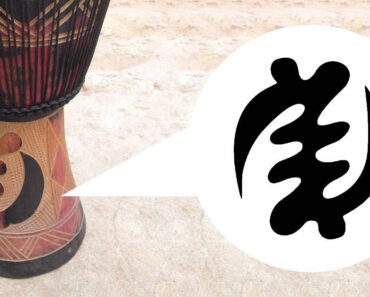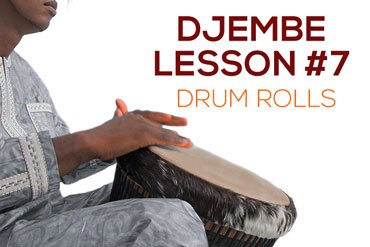| This post may contain affiliate links. If you click on the links and buy, we get a commission. It doesn’t cost you anything. See the full disclaimer here. |
How do I hold my djembe drum?
How to hold the djembe correctly is essential for producing the best sound quality and avoiding fatigue or injury. So let’s look at exactly how, and why the way you hold your drum, or djembe posture, is so important.
Why Is Djembe Posture Important?
Maintaining good djembe posture is essential when playing the djembe to prevent strain, fatigue, and potential injuries. Proper posture also allows you to produce the best sound quality from your djembe drum. Here’s a quick lesson on the basics of how to sit and hold the djembe correctly:
Benefits of good djembe posture
Maintaining proper posture while playing the djembe means you get the best out of your drum. Here’s why:
- Injury Prevention – Good posture helps avoid strain, tension, and potential injuries to the back, shoulders, arms, and wrists. Poor posture can lead to muscle fatigue and overuse issues over time.
- Breath Support – An upright, open posture allows you to breathe deeply from your diaphragm. This breath support is important for sustaining advanced djembe rhythms over longer periods.
- Tone Production – Correct positioning of the djembe pulled close to you and then angled slightly away from you, combined with relaxed arms and curved hand shapes, produces the best resonance and tone quality from the drum.
- Endurance – Proper alignment takes pressure off your spine and joints. This reduces fatigue and allows you to play the djembe for longer stretches without tiring as quickly.
- Technique – Having your arms, hands, and the djembe itself in the optimal positions enables you to execute the core bass, tone, and slap strokes with precision and ease.
- Focus – Sitting or standing upright with good posture helps you stay centered and focused rather than getting distracted by tension or discomfort.
- Presence – An engaged, grounded stance conveys confidence and strong djembe mastery, enhancing your stage presence and creativity when performing.
Paying attention to posture might seem like a minor detail, but it provides a firm foundation for djembe technique, endurance, and avoiding injuries. Developing good posture habits early allows you to progress further as a percussionist. Not only in your djembe playing, but in everything you do, these suggestions are in line with the National Library of Health’s recommendations.
Once you’ve read this article, why not put it into practice on our first djembe lesson: Lesson 1: Holding The Drum
1. Sitting – How To Hold The Drum in a Chair
- Sit on comfortably on a chair and position yourself on the front edge of the seat.
- Keep your back straight but relaxed, avoiding slouching or arching your lower back.
- Sit up tall from your hips while keeping your shoulders relaxed and down.
- Consider using a waist strap to keep the drum in place. We’ll discuss straps in a minute.
How do I Hold My Djembe Drum as a Beginner?
- Stand the djembe directly in front of you, open your legs and pull the drum towards you, i.e. have the drum between your legs. Now use your feet and ankles to secure it and lean it slightly away from your body at a 10-20 degree angle. It should sit neatly in the crook of your knees.
- When you play, keep it at this angle. Don’t play with it flat on the floor as it won’t resonate properly because the air (and sound) can’t escape from the bottom.
- Keep your posture upright, but not too straight.
- Make sure you have room to move and your elbows have space on either side when you start to play.
Hand and Arm Position
- Your dominant hand should form a loose “C” shape, with fingers curved and the palm parallel to the djembe head.
- Keep your dominant elbow at your side and your forearm angled down toward the drum head.
- Your non-dominant hand should be similar to your other hand, with fingertips ready to strike the drum.
- Relax your shoulders and let your arms hang naturally at your sides when not playing.
Head and Chin Position
- When you play the djembe, keep your head up and look straight ahead rather than hunching over the drum.
- Gently tuck your chin in slightly to maintain a straight spine.
- Looking down at the drum should only require minimal downward head tilt.
Maintaining this upright, balanced posture takes practice but pays off with better tone production, breath support, and endurance when playing the djembe for extended periods. Posture is a critical piece of djembe technique.
Should I Use A Strap?
Yes! I do all the time, whether sitting or standing.
Using a djembe strap can be a helpful accessory, especially for beginner players, but it’s not an absolute necessity. Here are some points to consider about djembe straps:
Pros of Using a Strap:
- Helps keep the djembe securely positioned against your body when sitting, preventing it from slipping.
- Allows you to play with an optimal 10-20 degree drum tilt without having to use your hands to support it.
- Frees up your non-dominant hand completely to focus on slap/tone techniques.
- Can reduce fatigue in your arms/shoulders from not having to hold up the djembe.
- Provides more stability when moving or dancing while playing.
Cons of Using a Strap:
- Takes some getting used to having the strap around your body.
- Lower-quality straps may stretch out or break.
- Having the djembe secured limits movement slightly.
- For standing play, you don’t need a strap if you are using a djembe stand.
- More experienced players may not need the help.
Many beginner djembe instructors recommend using a strap, at least initially, to lock in good positioning habits. This allows new players to focus just on their hand techniques without worrying about holding the drum.
As you gain experience and body awareness, you may find you can play without the strap and still maintain good posture. Ultimately, it’s a preference based on your skill level and playing style. High-quality, adjustable straps are relatively inexpensive to try out.
2. Standing Position Djembe Technique
How do I hold my djembe standing up?
Many drummers play the drum standing up. Playing the djembe while standing up requires some adjustments to your posture and positioning compared to sitting. Here are some tips for proper standing djembe technique:
Stance for Correct Djembe Posture
- Stand with your feet shoulder-width apart and knees slightly bent. Avoid locking your knees straight.
- Keep your weight balanced evenly on the balls of your feet.
- Hold your torso upright but relaxed, avoiding excessive arching of your lower back.
Djembe Height
- Adjust the straps so the djembe is around waist or belt height.
- Use a djembe stand, or hold the drum against your body with one hand under the bell to support it.
- Tilt the drum slightly toward you at around a 20-degree angle.
Arm Position for Clear Djembe Sounds
- Your resting position should be bother your hands on the rim of the drum.
- Your dominant hand should form a “C” shape as if you were sitting, with fingers curving toward the drumhead.
- Keep your elbows loose but close to your body.
- Let your arms hang relaxed when not striking the drum.
Movement & Exercise
- Bend slightly at the knees when striking bass tones to use your leg muscles.
- Shift your weight fluidly from foot to foot to support movement.
- Feel free to make small, controlled movements with your torso when playing.
Head Position
- Keep your head up and chin tucked slightly to maintain a straight spine.
- Look down at the djembe only with your eyes, not craning your neck.
Standing takes some adjustment, but allows more freedom of movement when playing the djembe. Just be sure to keep your posture aligned and avoid straining your back. Using a djembe stand can also help support good ergonomics.
3. Play the Djembe Sitting on the Drum
Playing the djembe while sitting directly on top of the drum is an unusual technique I’ve seen sometimes around the campfire or at festivals. It requires some specific adjustments to posture and technique. You should also be careful the drum can take your weight without cracking.
How Do I Hold My Djembe in Sit-on-the-drum Position?
- Sit with your legs con either side of the drum, directly on top of the djembe.
- Center your sitting bones/hips on the drum to evenly distribute your weight.
- Keep your back straight but relaxed, avoiding excessive arching or rounding.
Drum Angle & Technique
- Since you are sitting on it, with the drum on the ground, the drum will be at a 0 degree angle.
- This allows your arms to reach down naturally when playing.
Hand Position
- Your dominant hand will cup and strike more from an overhead position rather than parallel to the drumhead.
- Your non-dominant hand will need to reach further across the head to slap on the outer edges.
Arm Position for Clear Djembe Sounds
- Let your relaxed arms hang straight down from your shoulders toward the drum.
- Keep elbows loose and relaxed.
Head Position
- Look straight ahead rather than craning your neck down.
- Use only your eyes to monitor hand positioning on the drumhead.
Stability in Djembe Technique
- Engage your core muscles to sit up straight and prevent rocking.
- Use your leg muscles to stabilize your base when playing rhythmically.
This sitting position takes some adjustment but can be comfortable for shorter playing sessions. Using a djembe stand may be preferable for lengthy performances.
Now you’re a Pro! Check out our free course: How To Play Djembe For Beginners






